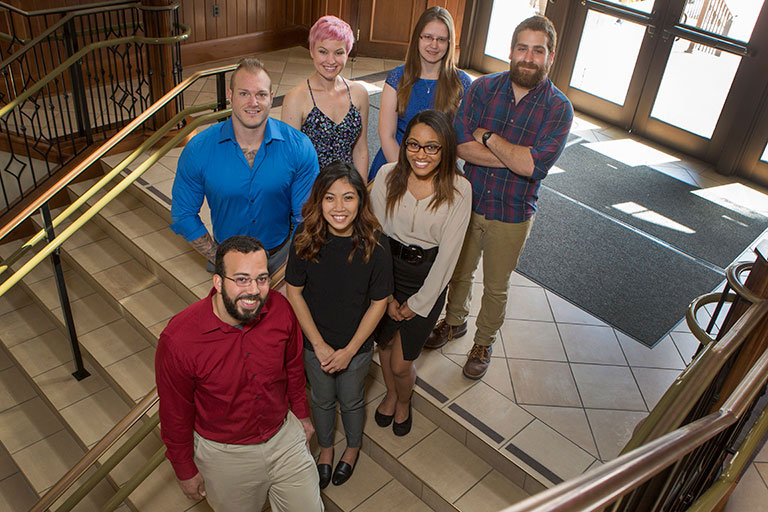
A record number of Florida State University students have received the highly competitive Graduate Research Fellowship from the National Science Foundation.
The NSF chose eight FSU students — a record high for the university — for this prestigious fellowship. Additionally, two students who have signaled their intent to attend FSU for graduate school also have won the award.
“Throughout the years, Florida State has been lucky to have wonderful, dedicated graduate students looking to further their academic careers and transform the STEM fields through research, teaching and service,” said Adrienne Stephenson, director of FSU’s Office of Graduate Fellowships and Awards. “This award by the National Science Foundation for eight of our students is a testament to their hard work and commitment to furthering their education.”
The fellowship program recognizes outstanding graduate students in NSF-supported science, technology, engineering and mathematics disciplines who are pursuing research-based master’s and doctoral degrees.
Fellows receive an annual stipend of $34,000 over three years, which allows them to conduct their own research at any accredited U.S. institution of graduate education. Fellows also receive a $12,000 allowance for tuition and fees, opportunities for international research and professional development.
The students are:
William Booker, 25, is a graduate student from Cumming, Georgia working on a doctoral degree in the Department of Biological Science in the lab of Professor Emily Lemmon. After receiving his undergraduate degree from University of Georgia, he came to FSU to study evolution of genomes. He specifically has examined the North American gray tree frog. He plans on pursuing a career as a research scientist in academia.
Louis Colling, 28,is a graduate student in molecular biophysics. He received his bachelor’s degree from Wichita State University in Kansas and has recently been working with Professor Debi Fadool in the Department of Biological Science. He is still narrowing down his research area, but is generally interested in disordered proteins and neurodegeneration.
Patrick Eastham, 24, is a native of Atlanta who is pursuing a doctoral degree in biomathematics. He is focusing on modelling medical applications of therapeutic ultrasound. He received his bachelor’s degree from Florida State in 2015.
Ashley Ernst, 24, is a graduate student from McHenry, Illinois pursuing a doctoral degree in physics. She primarily focuses on hadronic nuclear physics. She received her bachelor’s degree from Ohio Northern University and hopes to become a professor of physics and engage the public in STEM fields.
Zachary Jones, 26, is a doctoral student in the Department of Biomedical Sciences at the College of Medicine. Jones, who was born in New Orleans but relocated to Miami after Hurricane Katrina, hopes to pursue a career in academia and conduct neuroscience research. He is currently working on neuroinflammation associated with spinal cord injury in the lab of Professor Yi Ren.
Pamela Knoll, 30, is a doctoral student from Jacksonville. She graduated from FSU with a degree in chemistry in 2015 and immediately began graduate school. Knoll works in the lab of Professor Oliver Steinbock studying nontraditional crystallization of biomorphs.
Chelsey Laurencin, 21, is a senior from Miami and a first-generation college student, finishing her degree in three years. She has been working with Associate Professor Vasu Misra on analysis of the North Atlantic tropical cyclone motion. She plans to pursue a doctorate in meteorology with a specialization in tropical meteorology and study tropical cyclone intensity. She has not yet decided on a graduate school program.
Linsey Rodenbach, 21, is a senior from Tallahassee. She is double majoring in physics and applied and computational mathematics. As an undergraduate, she worked with National High Magnetic Field Laboratory researcher Stan Tozer studying the growth of single crystal depleted uranium samples. Rodenbach will attend Stanford University in the fall to study condensed matter physics.




